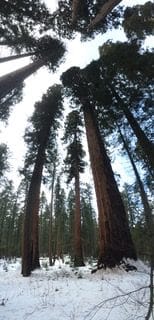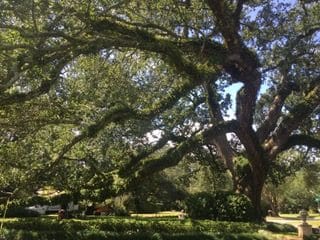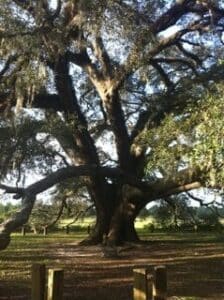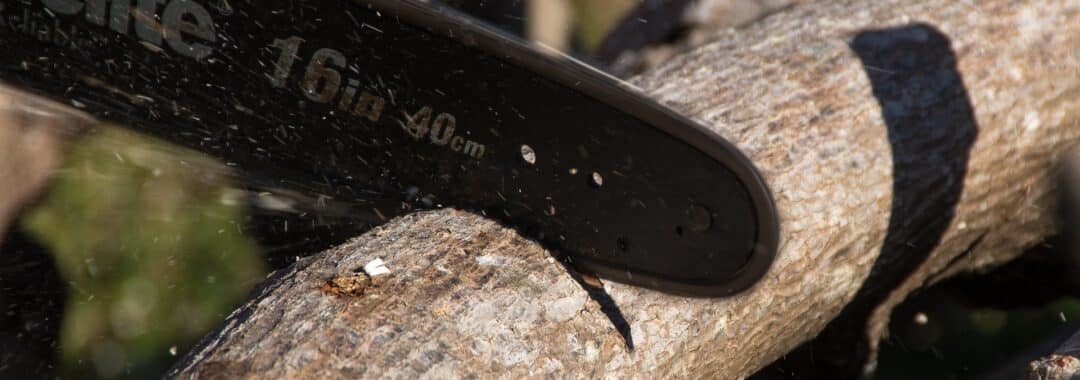
Before discussing the “when” to prune trees it is just as important to ask the question “Why” we prune trees in the first place. Why would the largest and oldest living organisms on the planet need our assistance? Trees have been doing fine without human intervention for millions of years! We can start by understanding the difference in forest trees vs trees in an environment populated by humans.
Forest trees grow much differently than trees grown in other landscapes. But why? Well, competition from other trees of course! For forest trees to perform well they must outperform other trees competing for the same growth space, nutrients in the soil, and sunlight. Trees maximize their efficiency in performance through a number of methods such as hormonal response. Allelopathic hormones are released to combat other root systems from having access to the same nutrients. All trees put on several types of growth. We are going to focus on two specific types of tree growth.
Scaffold Limbs
A scaffold limb is a limb that grows with the intention of retaining throughout the lifespan of the tree. They also play a huge role in the structural integrity of the plant through mass dampening properties to mitigate wind and other load forces that are applied to the tree. However, Scaffold Limbs can sometimes have hidden risks such as poor branch attachments due to co-dominant stems and bark inclusions. Supplemental Support Systems be installed many times to help mitigate issues. Reasons to remove scaffold limbs are disease or decline of the limb or limb failures. These issues leave the risk factors high for damage to pedestrians or structures. Prior to performing any pruning to your trees, you should consult an ISA Certified Arborist.

Temporary Limbs
A temporary limb is a limb that grows with the intention of subordinating at some point. Going back to forest trees, temporary limbs are used by trees for nutrient production and photosynthesis to outperform competing trees. Once these limbs have become crowded of sunlight or are no longer sustainable the tree will subordinate the limbs by killing them and allowing them to fall off to crush understory vegetation as well as begin a process called nutrient cycling as they decay into the soil.

Pruning Trees In Urban Areas
In an urban environment. Trees do not have the same competition they tend to see in the forest. Many trees will hang on to this temporary growth much longer than needed causing potential moisture issues in the canopy from poor evaporation. This can lead to fungal disease and in many cases can lead to excessive stress on your trees.
Many of the potential pruning issues your trees face can be mitigated with “Crown Cleaning” and/or “crown thinning”. The number one reason for tree ailments of any species worldwide is a fungal related disease. And the number one cause of tree failure worldwide is due to structural imperfections such as co-dominant stems and bark inclusions.
Plan Your Wintertime Pruning
Winter time pruning is much better for trees as they are not in an active growth cycle. During the spring and summer month, trees will not respond to all pruning methods the same. Heavier pruning cycles can overstress trees when done during active growth cycles. Crown Cleaning and dead tissue removal can be performed many times throughout the year. But if your trees haven’t been maintained in some time then considering winter pruning would be a better option. Each wound created on a tree no matter how large or small takes energy to compartmentalize.
Trees do not “heal” but rather “compartmentalize” by walling off decay. When pruning is performed in the colder months trees going into their next growth cycle will be utilizing less energy to compartmentalize than while in an active growth cycle during the spring and summer. Contact New Leaf Arboriculture to evaluate tree pruning and an arboricultural management plan for your trees today. Follow Us on Facebook to stay up to date on our latest industry news.


